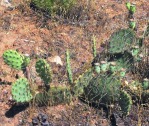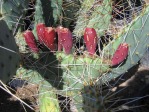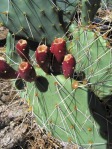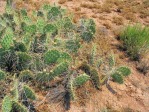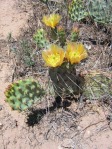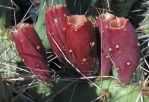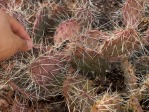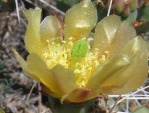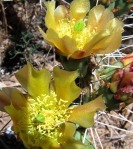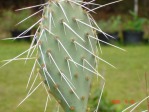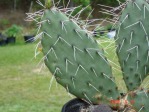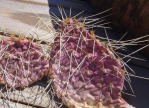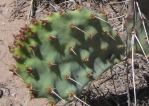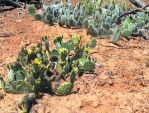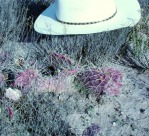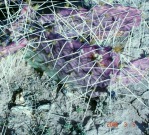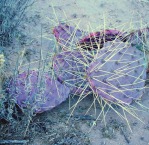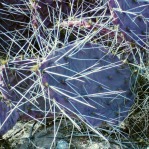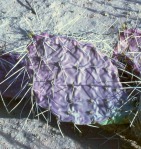
Griffiths, Bulletin of the Torrey Botanical Club 43: 86, 1916
Holotype; Isotype; Herbarium; Herbarium; Herbarium; Herbarium; Herbarium
Original Description.
What is Opuntia zuniensis?
Opuntia zuniensis is a handsome, prickly pear cactus found in Arizona, New Mexico, southern Utah, southern Texas, and perhaps southwestern Colorado. It has been lumped together with O. phaeacantha, O. tortispina, or O. camanchica. But it is a distinct species and where it occurs with those species, intermediates (hybrids) are not produced.
Details
O. zuniensis branches are prostrate on plants that may be 25-30 cm tall and up to 1 m across. Cladodes recline on their edges. Sometimes, a pad will rise above the others. Cladodes are obovate, oval, or rhomboid and may be acute at both ends. Mature cladodes may reach 10-12 cm across and up to 25 cm long. Areoles are often a 1 cm apart or a bit more on mature cladodes. Spines are white(ish) but can be straw-yellow on the apex of new growth. There are typically 3-6 spines at the apex of new growth, and one or more may be 2 inches long. Over time the apex spines may reach 3 inches in length. The plant often develops a shaggy look due to its numerous, long spines.
Flowers are generally medium or light yellow without red but may become light orangish in time. The fruit is a light, dull red. The rind is greenish and the pulp is colorless.
Ploidy is unknown.
Other Notes
O. zuniensis is a wide ranging plant, but seldome numerous in any one area. It is usually found growing on sandy soils of grasslands or pinon-juniper woodlands; sometimes it is found in the greater El Paso, TX area. If it is growing on slopes or in rocky areas, it will usually grow in pockets of sandy soil. O. zuniensis is a monotypic species; it is not as variable as other Opuntia of similar size. Rarely, the flowers of O. zuniensis are light orange instead of light yellow. Also uncommonly, the bases of the white spines may darken slightly. Overall, O. zuniensis has a shaggy look due to its spines. O. zuniensis often blooms 2- to 3-weeks later than O. polyacantha.
They range northward as far as the Grand Junction area, and occupy the southern Colorado Plateaus east from the Coconino/Kaibab Plateau (sneaking east to the Rio Grande in New Mexico).
O. zuniensis is an excellent garden plant due to its relatively small size (about the size of O. phaeacantha) and shaggy, spiny look. Also, its bloom time extends the season.


